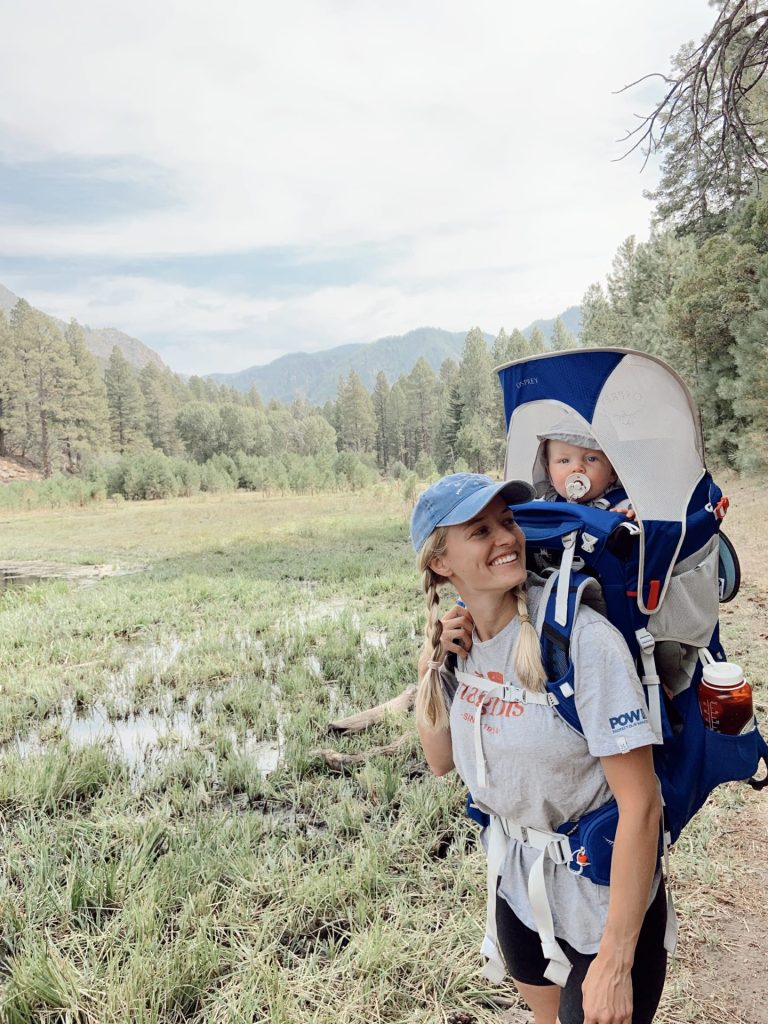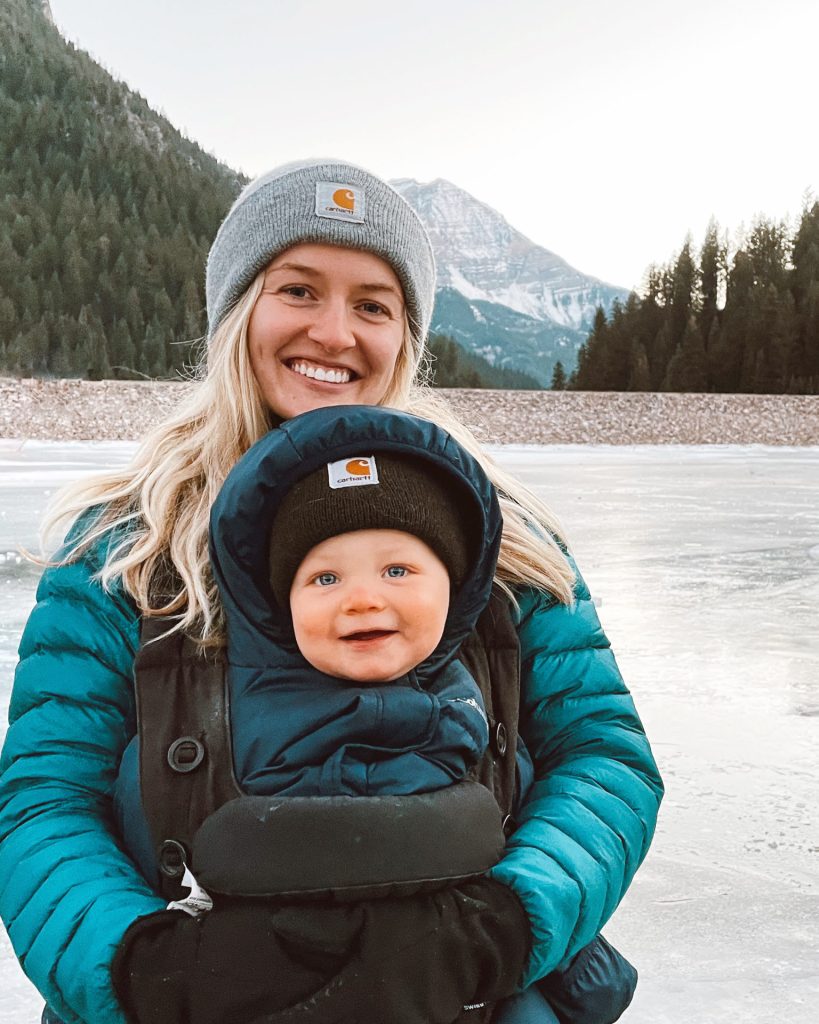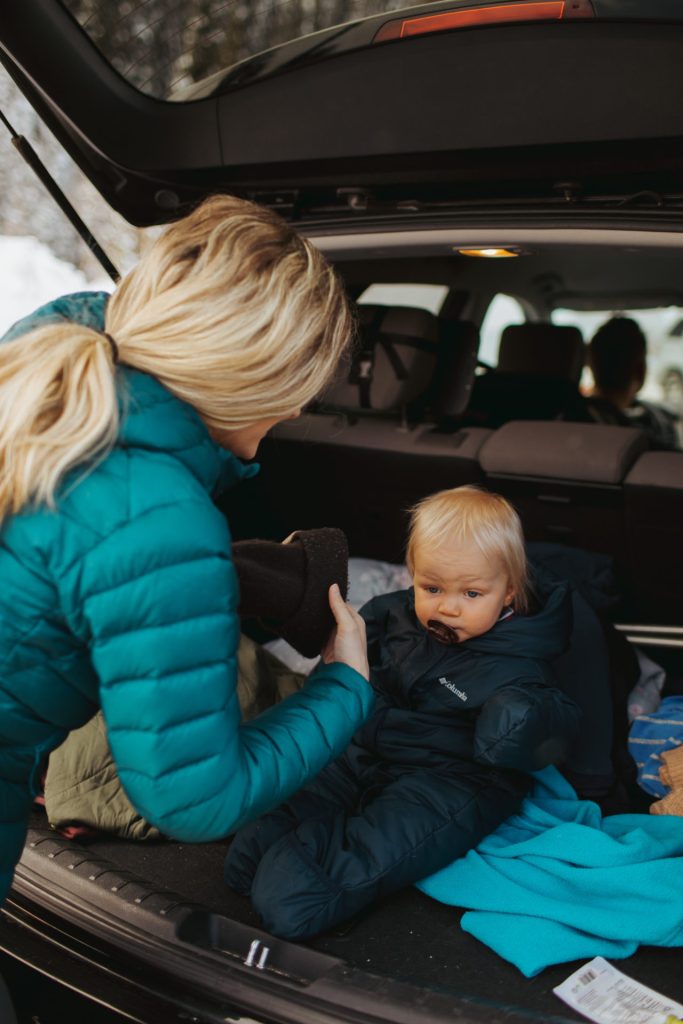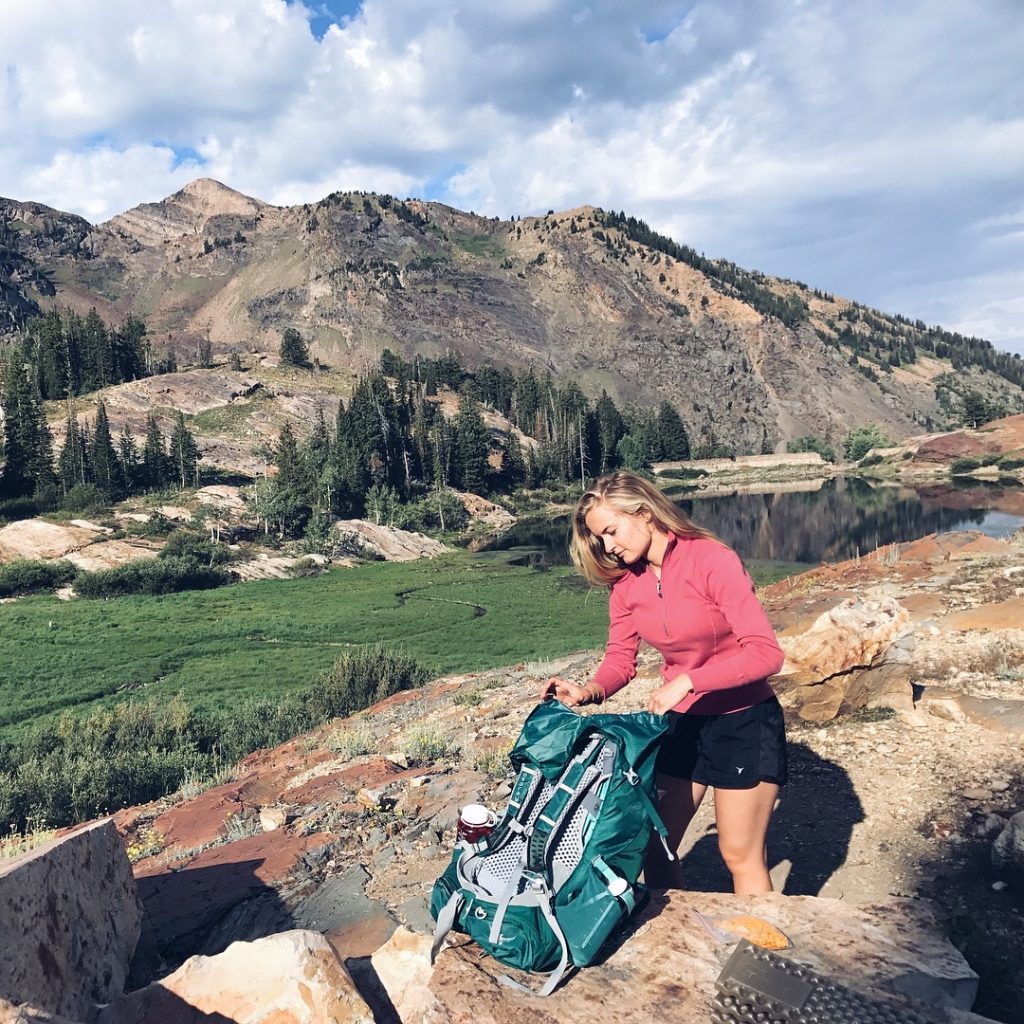Sleeping pads may seem like a pretty simple piece of gear. But there’s actually a lot to consider when it comes to being able to choose the best sleeping pad for you. Having a good one can majorly increase your quality of sleep on the trail. And better sleep means a better overall experience.
*Some of the links shared in this post may be affiliate links meaning I make a small commission off of your purchase (with no extra cost to you). This allows me to continue to create free content for my readers. Thank you for your continued support!

There’s a lot to consider when it comes to buying a sleeping pad. Here is a list of three questions to ask yourself when looking:
- What will you be using it for?
- How important is it to you that you sleep comfortably when camping or backpacking?
- What will the lowest temperature be when you’re out?
- How much money are you willing to spend?
Types of Sleeping Pads
- Manually Inflated Sleeping Pad: This pad is one you have to blow air into to create a nice, comfortable sleeping spot. It’s typically lighter weight and packs down smaller than a self-inflating sleeping pad because it doesn’t have the materials needed to self-inflate. It’s a simple design that is a great option if you want a lightweight, but comfortable pad. Perfect for backpacking.
- Self-Inflated Sleeping Pad: These are similar to manually inflated pads, but instead of you having to blow air in, you just open the valve and they inflate on their own. As a result of their inner construction, they are a little heavier. They are a great option if you aren’t concerned with weight, and don’t want to have to work as much for a comfortable spot to sleep. They tend to be a little more padded and comfortable as well. Perfect for car camping.
- Closed-Cell Foam Sleeping Pad: This type of pad is the most simply designed and is by far the most affordable option. Consequently, it is probably the least comfortable. They are made up of small closed air cells. As a result of that, foam pads don’t compact down very small, so make sure to take that into consideration. One benefit though, is you don’t have to worry about them popping and needing to carry a patch kit. Because of that, I use this kind of sleeping pad for my dog to sleep on because I don’t have to worry about him popping it. Being a cheaper pad, closed-cell foam pads are a great option for someone who is just getting into camping or backpacking and doesn’t want to drop a lot of money to spend on gear.
| Manually Inflated | Self-Inflated | Closed-Cell Foam | |
|---|---|---|---|
| Price | $$ | $-$$$ | $ |
| Weight | Light-Medium | Heaviest | Lightest |
| Warmth | 🔥 -🔥 🔥 🔥 | 🔥 🔥 🔥 | 🔥 |
| Comfort | 👍 👍 | 👍 👍 👍 | 👍 |
| Best Bor | Backpacking or Camping | Car Camping | Backpacking |
Shape of Sleeping Pad
Sleeping pads come in lots of different shapes and sizes so you can really get a custom fit. Depending on your height and weight, you will want a pad that you are comfortable on. You can get a rectangular shaped pad or one that tapers toward the feet. Some are wider than others. The lengths also vary. To choose the best sleeping pad, you will want to consider what you are going to be using it for: backpacking or car camping.
If you are looking for a sleeping pad that you can take backpacking, you will want something lightweight. Things that are going to save you weight are a a shorter, narrower pad, that tapers. You don’t have to get a pad with all of those things, just things to consider when you’re thinking about weight. If you are car camping, you don’t need to worry about weight, and find something that is comfortable.
If you always go camping with a partner, you might consider getting a double sleeping pad. It allows you to sleep closer and even stay warmer.

Warmth of Sleeping Pad
If this is your first time purchasing a sleeping pad, you might not realize how important your sleeping pad is in helping you stay warm at night. When you are laying in your sleeping bag, all the insulation beneath you is being compressed and doing absolutely nothing to keep you warm. So it’s only the insulation from your sleeping pad keeping you insulated from the cold ground.
R-Value
R-value is the insulating ability of a sleeping pad. The higher the r-value, the warmer the sleeping pad. Unfortunately, it is not a universal rating and what one company considers an r-value of 2 may be different from another. Nevertheless, it does give you a general idea of how insulated the pad you are getting will be.
Some companies don’t use the r-value and instead opt to use a temperature rating. Here is a chart that shows a good general idea of what r-values are good for different temperatures.

What I Use
When I go car camping, I go all out and don’t care about weight or size. We use the Exped MegaMat Duo 10 Sleeping Pad. It is a double sleeping pad and very thick. When it’s blown up, it barely fits inside the back of our Hyundai 2017 Santa Fe, and in our 3-man tent. It’s a self-inflating pad that is extremely comfy. My husband and I love it. I have also slept on it with just my 10 month old and there was plenty of room.
When I go backpacking, I love my Klymit Static V Insulated pad. It is rectangular and has an r-value of 4 so I can use it on very cold nights. It is not too heavy, and packs down to about the size of a Nalgene bottle. I am a stomach and side sleeper and find it to be very comfortable. My husband is 175lb and sleeps on the same pad. He loves it and sleeps great. Klymit also makes a lighter weight version that looks great also if you really want to cut down on ounces!

Knowing how to choose the best sleeping pad for you will go a long ways to making your backcountry sleeping experience a whole lot better. If there is one thing I covet, it’s my sleep. And I do everything I can to get a good night’s sleep when I’m out camping and backpacking. Find what works for you and go for it!
If you are also in the market for a new sleeping bag, check out my post all about How to Choose the Best Sleeping Bag. I go over everything you need to know to make the right decision for you.
Check out my other blog posts on backpacking gear:






Pingback: Comfort and Ease: Best Self-Inflating Sleeping Pads for Camping